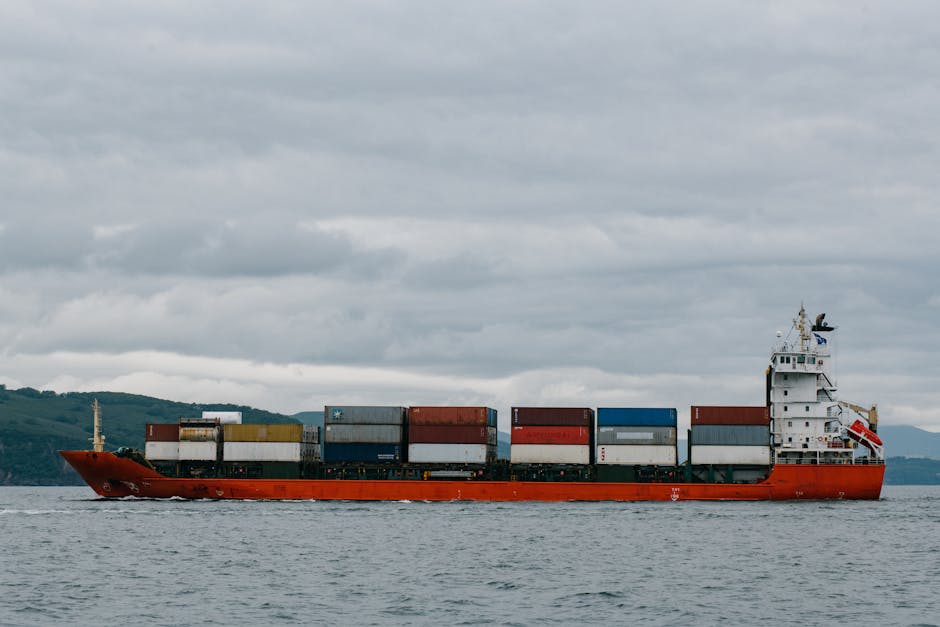Recent heavy rains are causing flooding around the world. Some of these floods have been severe, making it difficult for people to return home and access vital resources such as food, water, and shelter.
Many areas remain cut off due to flooded roads which make it impossible to get anywhere fast. This is particularly problematic since many areas cannot easily be evacuated because they will likely stay during a flood!
In this article, we will talk about why rain causes flooding and some possible solutions to reduce or prevent flooding. By educating yourself on how rainfall impacts rivers and coastal regions you can help mitigate large-scale flooding.
This article does contain information that may upset you (like images and descriptions of deadly natural disasters). Make sure to take proper precautions before reading so that you know what to do in case something happens to you or someone else.
We hope you learn something new here but more importantly, feel better prepared in the event of a disaster.
The climate is changing

Over the past few decades, scientists have noticed that the temperature of our planet is rising due to various factors including greenhouse gases like carbon dioxide which are left over from all the energy we use in our daily lives.
This increase in temperatures has an effect on how much water vapor there is in the air. More moisture means more “clouds” or floating particles in the atmosphere.
When clouds form, they reflect some of the sun’s light back out into space. This cuts down on what gets reflected off the ground and onto warmer surfaces, so you eventually get cold instead of warm.
It is thought that this process is one reason why we have seen an average rise in atmospheric CO2 levels but no significant change in global temperatures.
However, recent research suggests that may not be the case for very long! Climate models predict that as the amount of CO2 rises, the temperature will start to climb too.
Climate experts agree that we can expect to see higher average surface temperatures in the coming years and months. They also believe that we will see more heavy rain events because of increased rainfall caused by heated air.
Rising sea levels

As climate change makes the water supply and pressure in our oceans rise, it is causing rivers to flow more heavily. This has happened recently as the planet has been recovering from the effects of past climate changes.
Many scientists agree that we are now experiencing an increase in rainfall due to ocean warming. Some believe this increased rain can even be attributed to global cooling!
This could mean that there will be more heavy downpours and floods in areas that are vulnerable to flooding already. For example, coastal communities or low-lying areas that have experienced significant beach erosion in recent years.
In some cases, rising seas may push away land enough for boats to no longer be able to remain at their current location. This could affect local marinas, boat clubs, and beaches.
There is also a risk that high tides and waves caused by heavier rains could damage infrastructures such as roads and bridges, or even cause small-scale natural disasters like inland floods.
More rainfall

Recent heavy rains are not due to climate change, but rather our growing population. Due to rising populations around the world, there is just too much water that needs to be absorbed and stored in reservoirs and groundwater.
As more people inhabit areas with limited resources for water, it must be stressed that we need to keep an eye on how many individuals exist in a given area.
This includes ensuring adequate supplies of clean drinking water as well as understanding your personal use levels. We also have to reduce unnecessary water consumption.
By reducing water usage, you help prevent overloading existing systems while also keeping some fresh water available for future generations.
Worldwide flooding: Why heavy rains are to blame
There has been a lot of talk about whether or not global warming is real and if human activity is having an effect on the environment. While climate changes occur naturally, the amount and frequency of changes caused by humans are significant.
Water is one of the most important elements for life to survive so knowing why and how rainwater is formed is essential to understand the effects that human activity can have.
When it comes down to it, floods are simply excess water moving away from its source. When this happens, the natural landscape does not have enough time to absorb all of the liquid before it reaches navigable waterways or land.
At this stage, erosion occurs which can seriously damage the surrounding ecosystems.
Flood control fails

As climate change brings about longer periods of drought, water resources become even more important than they already are. Unfortunately, many flood control systems we have now simply do not work anymore!
As global temperatures rise, so does average rainfall across the planet. This has significant consequences for everything from urban flooding to agricultural runoff.
Many areas rely heavily on rain-fed rivers and streams for their drinking water supply. When these waterways get flooded, this can cause major problems.
In addition to wasting water, floods can also carry lots of pollutants that end up in our water supplies. In developing countries, polluted waters often contribute to health issues such as diarrhea and illness.
Floods can also damage or destroy property – something that especially impacts low-income communities. Sometimes, people will lose their homes and things like insurance won’t cover much because the house was “expected to stand” during a flood.
Altogether, floods pose a serious risk to human life and health and can hurt an area’s economic stability.
Runoff into lakes and rivers

Recent heavy rains have left many areas around the world with shockingly high water levels. This has been particularly noticeable in river basins, where flooding is much more common due to the higher amount of runoff that gets dumped into the waterways.
Just look at the pictures! Water covers almost every inch of land surface, leaving very little dry ground. Many people can’t return home because there is no open space, and even those who can often live out of their homes for only a few days until the waters recede enough to make it safe.
In some cases, these floods are caused by significant rainfall occurring relatively close together. This article will discuss why this happens and what you can do to help prevent it in the future.
Runoff occurs when rainwater flows off the land and into bodies of water. The average person produces about 10-20 gallons (40-80 liters) of liquid waste per day that ends up flowing into local streams or oceans as precipitation.
Some of this liquid makes its way down hills, but most runs off directly onto other parts of the landscape, either through large puddles, overland flow, or both.
As it does so, it meets an increasingly moist surface area, which causes the water to stay in contact longer. More moisture = heavier fluid = more runoff.
When it comes time to drain away from the terrain, however, things get tricky.
Topographical differences

There are many reasons why some areas get more rainfall than others depending on where you live, but one of the biggest is topography or the shape of the land.
Land with higher peaks will gather rainwater as it comes in contact with the atmosphere, then run off the peak into other parts of the area. This water may be diverted away from homes and businesses by ditches and natural barriers such as rivers and canyons, but it’s still flowing so it has to go somewhere.
Some places have very steep slopes that cause this water to slowly drop down, sometimes even flooding nearby valleys. The Colorado River basin is an example of this – there are lots of tall mountains surrounding Lake Tahoe which help keep the lake dry!
With no low lying terrain for the water to drain into, it simply adds height to the mountain, creating more pressure due to gravity. When the air temperature rises during spring and summer, the atmospheric pressure drops, leaving more space between each layer of air, making the air become thinner and denser. As a result, less friction occurs when molecules collide with each other, and thusly liquid particles move faster.
This article will discuss how climate change makes heavy rains possible and how we can prepare for them.
Building design

The large skyscrapers we have come to admire as symbols of our ever-expanding culture are unfortunately not very well designed when it comes to rainfall. They may look beautiful during the day, but they do not effectively keep water out at night.
Many tall buildings have an inner core that is made up of glass or steel which allows light in and helps give you some sense of visibility during the daytime, but these same windows can be left open to facilitate air flow which also aids ventilation, however, this creates more opportunities for rain to enter.
If a heavy downpour occurs then there are two things that happen: 1) Water gets inside the building through those opened windows, and 2) Rain runoff from the roof gathers in the space within the structure, creating even more opportunity for water to get into the interior.
This process only escalates once nighttime arrives as the height of the building no longer prevents precipitation from touching the surface below, and the already gathered rain runs off the roofs and into the surrounding area, depositing additional moisture onto areas such as roads and sidewalks where people walk or run around.
Be proactive

In some parts of the world, heavy rains are causing catastrophic flooding and mudslides. When it comes down to it, however, this is totally preventable.
It is true that our planet is getting warmer due to climate change, but weather patterns are quite complex. Climate change can trigger floods or drought, and people living in areas with frequent natural disasters should be prepared for the worst.
